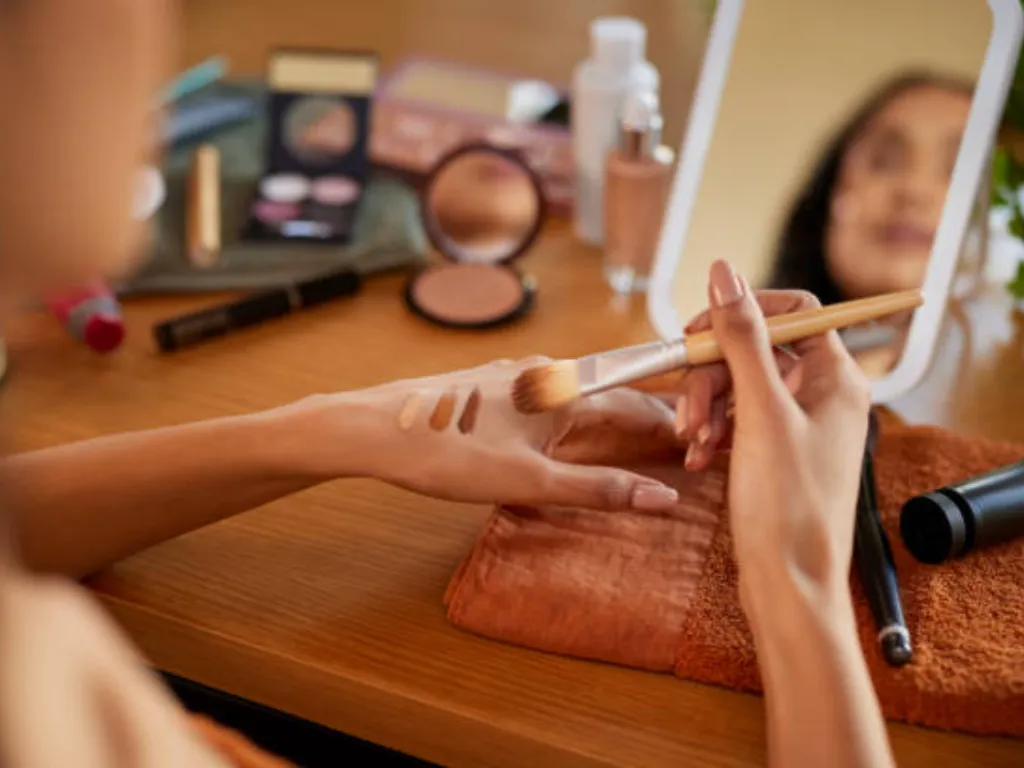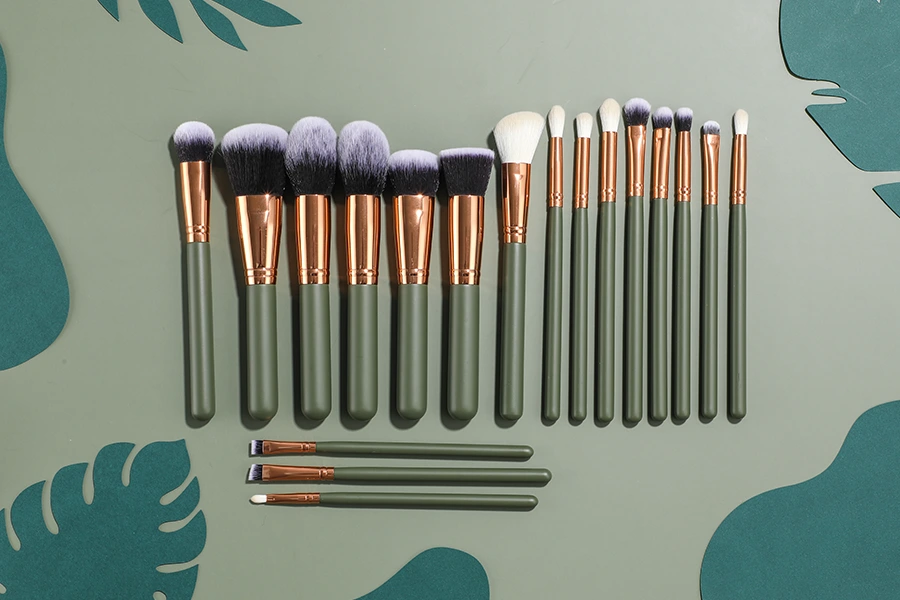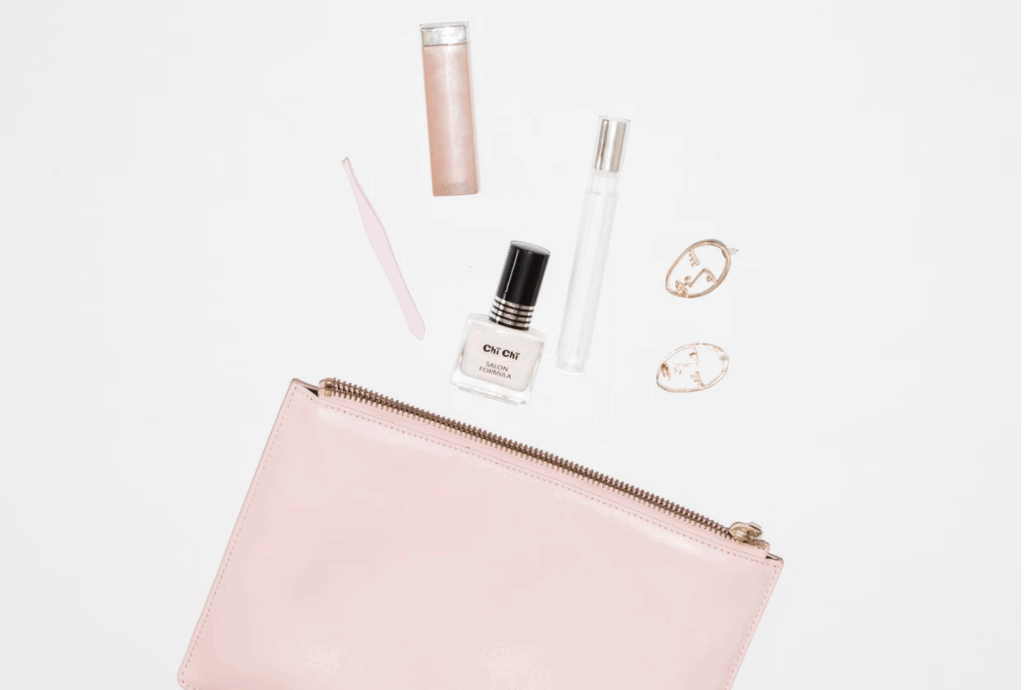Introdução
Neste guia abrangente, Vamos nos aprofundar no mundo enigmático dos pincéis kabuki, explorando sua origem, estrutura, e a requinte necessária para dominar seu uso. Se você já ficou intrigado com essas ferramentas cosméticas únicas, Continue lendo para descobrir os segredos do pincel kabuki e como exercer seus traços artísticos para um aplicativo de maquiagem impecável.

fonte: Freepik.com
O que é pincel kabuki?
Um pincel kabuki é uma ferramenta cosmética única e versátil, reconhecida por seu design distinto e recursos multifuncionais no reino do aplicativo de maquiagem. O termo “Kabuki” traça suas origens no teatro japonês tradicional, onde os artistas utilizaram maquiagem vibrante e exagerada. O pincel, inspirado neste contexto cultural, evoluiu para um item básico na indústria da beleza.
A anatomia de um pincel kabuki normalmente inclui cerdas densamente compactadas dispostas em forma abobadada ou de topo plano. Este arranjo permite aplicação eficiente e controlada de vários produtos de maquiagem. A alça é curta e robusta, Fornecendo uma aderência confortável para os usuários, Transformando o processo de aplicação em uma experiência precisa e artística.
O que é um pincel kabuki usado para?
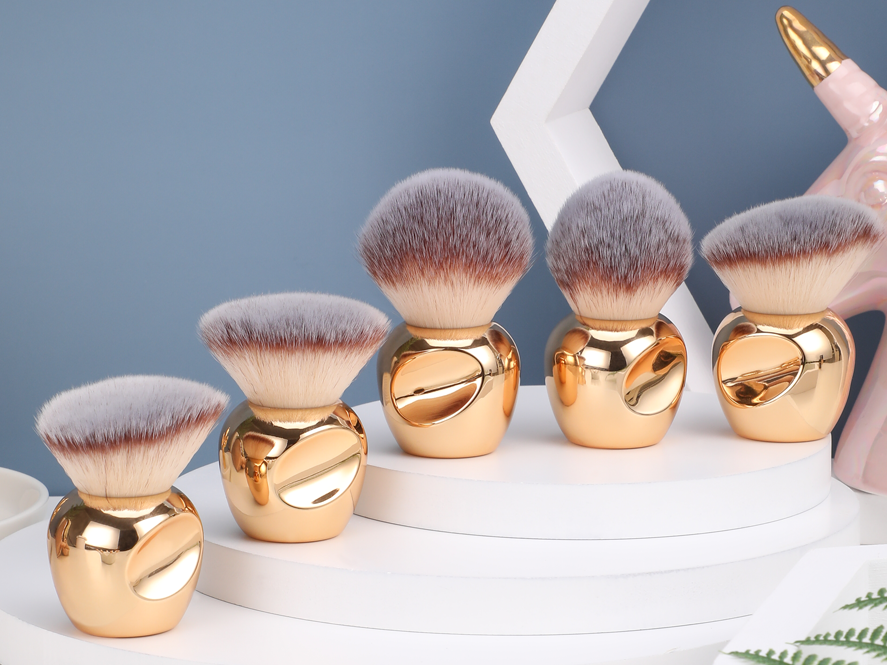
Escova kabuki por tipos
Para que é um pincel kabuki usado na maquiagem? De fato, Cada tipo de pincel kabuki foi projetado para atender a aplicativos de maquiagem específicos, Oferecendo aos usuários um conjunto versátil e abrangente de ferramentas para criar uma aparência impecável e artística.
| Tipo de pincel kabuki | Características | Aplicativo |
| Fundação Kabuki | Denso, forma plana ou abobadada para mistura sem costura | Aplicação de líquido ou pó |
| Pó kabuki | Grande, cerdas fofas para cobertura controlada e até | Definir pós |
| Corar kabuki | Forma arredondada para uma descarga macia e difusa | Aplicação de cor de blush e bochecha |
| Corretivo Kabuki | Pequeno, cerdas densas para mistura direcionada e precisa | Corretivo e cobertura spot |
| Sombra dos olhos Kabuki | Formas variadas (plano, angular) Para diferentes áreas oculares | Aplicação de sombra para os olhos |
| Contour Kabuki | Design angular para posicionamento preciso e mistura | Contorno e escultura |
Escova kabuki por formas
Cada forma de pincel kabuki serve a um propósito distinto, Fornecendo aos entusiastas da maquiagem uma série de opções para obter efeitos específicos em suas rotinas de beleza.
| Forma de pincel kabuki | Descrição | Aplicativo |
| Pincel kabuki liso | Um apartamento, denso, e cabeça de escova quadrada | O que é um pincel Kabuki superior usado para? É ideal para aplicar pó & fundação líquida, Fornecendo um acabamento impecável |
| Escova de kabuki angular | As cerdas são cortadas em um ângulo | Ótimo para contorno e escultura, oferecendo precisão |
| Pincel Kabuki pontiagudo | Cônico no topo, formando uma ponta pontiaguda | Bem-alimentado para trabalho detalhado, como corretivo ou aplicação de sombras |
| Kabuki abobadado | Cabeça de escova arredondada e cheia com um ligeiro cone no topo | Versátil para várias aplicações, incluindo blush e pó |
Como usar o pincel kabuki?
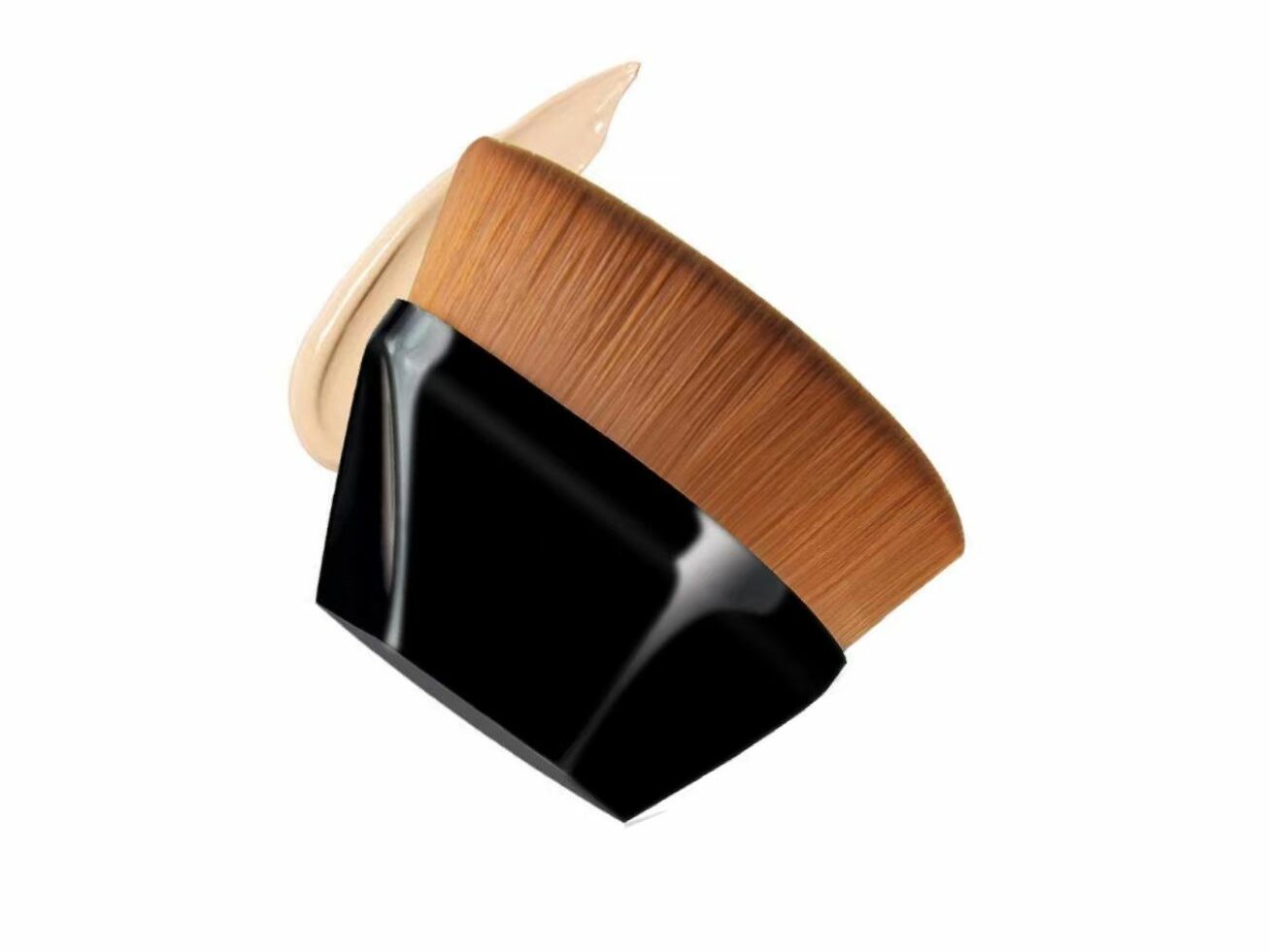
Prepare sua pele:
Comece com um rosto limpo e hidratado para garantir uma aplicação suave.
Aplique o primer, se desejar, para uma aparência de maquiagem mais duradoura.
Aplicação de fundação:
- Para fundação líquida:
Dispense uma pequena quantidade na parte de trás da sua mão.
Dab o pincel Kabuki na fundação.
Use movimentos circulares para misturar a base no seu rosto.
- Para base em pó:
Agite o pincel no pó.
Bole -o em seu rosto em movimentos circulares para um acabamento retocado.
Contorno e escultura:
Use uma escova de kabuki angular.
Aplique o produto de contorno nas cavidades de suas bochechas, queixo, e lados do nariz.
Misture usando golpes de vantagem ou para cima para uma aparência natural.
Aplicação de blush:
Use um pincel Kabuki arredondado para um aplicativo de blush mais suave.
Sorria para localizar as maçãs de suas bochechas.
Varre o pincel em um movimento circular nas maçãs e misture em direção às suas templos.
Configuração de pó:
Agite o pincel no pó.
Polvilhe levemente no seu rosto para definir sua maquiagem.
Aplicação corretiva:
Para corretivo:
Use um pincel Kabuki pontiagudo.
Dab o pincel no corretivo.
Aplique -o em áreas que precisam de cobertura extra, como manchas ou círculos sob os olhos.
Aplicação de sombra para os olhos:
Escolha um menor, escova de kabuki arredondada.
Aplique sombra nas pálpebras usando movimentos suaves de batida ou turbilhão.
Limpe seu pincel regularmente:
Limpe seu escova de kabuki regularmente para evitar o acúmulo de produtos e manter seu desempenho.
Use um limpador de escova suave ou shampoo para bebês, e enxaguar suavemente e remodelar as cerdas.
Pratique diferentes técnicas:
Experimente diferentes técnicas, como arremessar, Buffing, ou girando para alcançar vários efeitos de maquiagem.
Ajuste a pressão e a velocidade de seus golpes para controlar a intensidade do aplicativo.
Lembrar, O pincel kabuki é uma ferramenta versátil, e suas técnicas de aplicação podem ser adaptadas com base em preferências pessoais e a aparência de maquiagem desejada. Com um pouco de prática, Você encontrará os golpes perfeitos para melhorar sua beleza natural sem esforço.
Como escolher o melhor pincel kabuki?

fonte: Freepik
Determine seu propósito
Identifique o uso primário do pincel. Como consumidor individual, Mencionamos a você que os pincéis kabuki vêm em vários tipos, cada um projetado para aplicações específicas, como fundação, contorno, corar, pó, etc.. Se você pretende se tornar um profissional de maquiagem, Considere comprar um completo Conjunto de pincel de maquiagem Kabuki para a prática. Se você é um vendedor de negócios trabalhando para um negócio de atacado de escova de kabuki, é recomendado que o seu Fornecedores de escova de kabuki oferecer serviços como atacadista, rotulagem privada, e serviços OEM.
Considere o material de cerdas
Decida entre cerdas sintéticas e naturais com base em suas preferências e considerações éticas. As cerdas sintéticas são livres de crueldade e funcionam bem com produtos líquidos, enquanto cerdas naturais são adequadas para pós.
Avalie a densidade de cerdas
Para aplicação de fundação, Escolha um pincel kabuki com cerdas densas. Isso garante uma mistura mais suave e um acabamento mais retocado. Escovas menos densas funcionam bem para aplicações mais leves, como pó.
Selecione a forma correta
Como o gráfico acima indica, Existem diferentes formas de escovas de kabuki para seleção. O melhor pincel kabuki para você é o ideal para seu uso específico.
Considere o comprimento e a forma da alça
Selecione um comprimento de alça que forneça o nível de controle que você deseja durante a aplicação. Alças curtas oferecem precisão, enquanto as alças mais longas fornecem flexibilidade.
Escolha uma forma de alça que se sinta confortável em sua mão, Aumentando a facilidade de uso.
Reputação da marca
Pesquise e escolha marcas respeitáveis conhecidas por produzir escovas de Kabuki de alta qualidade. Ler críticas e buscar recomendações podem ajudá -lo a avaliar o desempenho e a durabilidade do pincel. O BS-Mall é um fabricante confiável de pincel de maquiagem da China, oferta pincel kabuki de etiqueta privada Serviço para clientes com necessidades de marca.
Considerações orçamentárias
Defina um orçamento com base em suas preferências e necessidades. Embora existam opções de ponta e orçamentárias, Investir em um pincel de qualidade geralmente resulta em melhor desempenho e longevidade.
Teste antes de comprar
Se possível, Sinta as cerdas e teste o pincel na loja para avaliar sua suavidade, densidade, e sensação geral. Essa experiência prática fornece informações valiosas sobre o desempenho do pincel.
Considerações éticas
Se considerações éticas são importantes para você, Opte por marcas que oferecem opções sem crueldade. Muitas marcas agora fornecem pincéis sintéticos de cerdas kabuki que são éticas e de alto desempenho. BS-Mall é sustentável pincel de maquiagem & fabricante do liquidificador você pode depender para expandir seu mercado de beleza.
Preferência pessoal
Em última análise, Sua escolha de pincel kabuki deve se alinhar com suas preferências pessoais. Considere fatores como tamanho, peso, e apelo estético, Garantir que o pincel complemente sua rotina e estilo de maquiagem.
Conclusão
Na vasta paisagem de cosméticos, O pincel kabuki é um símbolo da arte, precisão, e auto-expressão. De seus laços históricos ao teatro Kabuki à diversidade de opções contemporâneas, Cada pincel narra uma história de habilidade e evolução estética. Dominar o pincel kabuki não é uma rotina, mas uma experiência imersiva convidando indivíduos a explorar a interseção da tradição e da modernidade, precisão e criatividade. À medida que o pincel desliza pela tela do rosto de alguém, Não se aplica apenas maquiagem; pinta uma narrativa de beleza, habilidade, e o fascínio atemporal da expressão artística.














